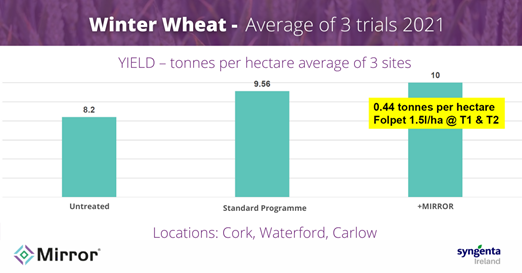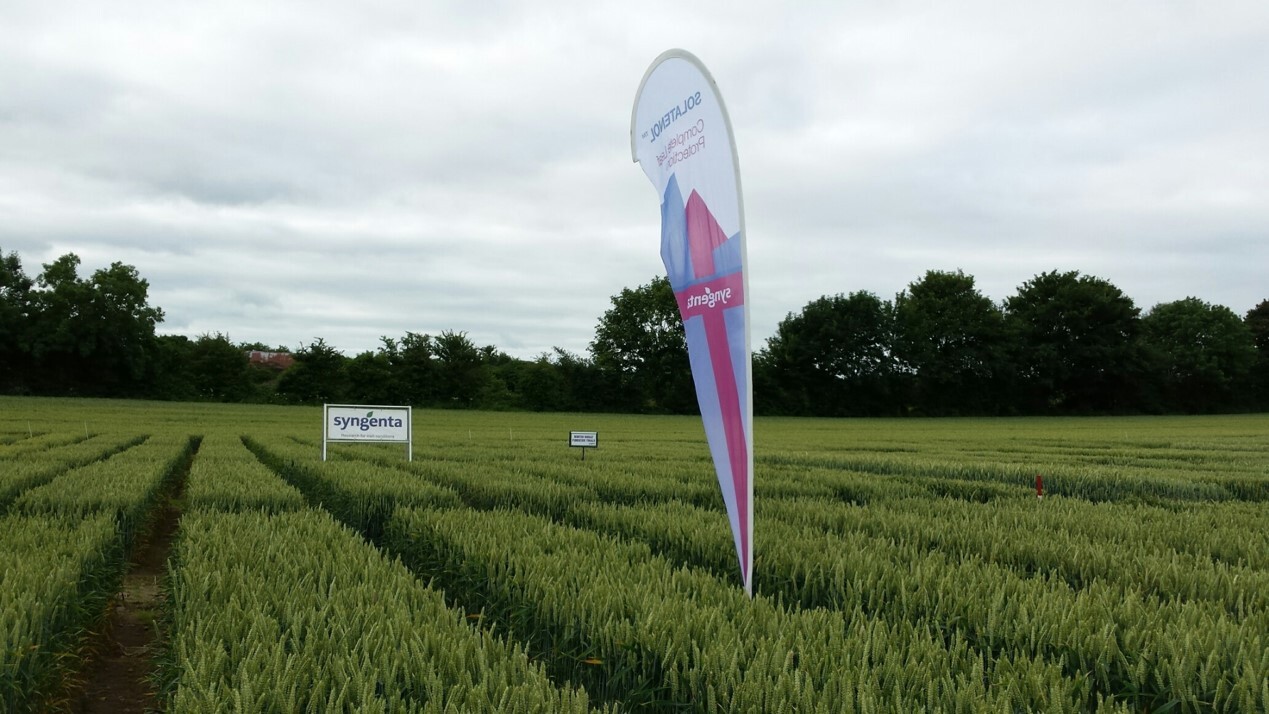Chlorothalonil (Bravo) was the backbone of disease control programmes in wheat and barley production for many years, until its regulatory demise in 2020.
Most growers prioritised the inclusion of Bravo in the tank when Septoria was the target disease on wheat, or Ramularia on barley.
The loss of chlorothalonil left a void in disease control programmes, but the rationale for using chlorothalonil can now be applied to the alternative multi-site fungicide, Folpet.
Essential multi-site fungicide
Syngenta’s Billy Cotter discusses Folpet and explains how it performs two separate tasks in disease control programmes.
Billy explained: “Firstly, Folpet’s inherent fungicidal properties deliver disease-control benefits on top of whatever partner fungicides it is applied with.
“We have seen this clearly for Septoria on wheat and Ramularia on barley, and it can also be observed with other diseases like rust and net blotch.
“The disease control and the associated yield benefits are sufficient justification for adding Folpet to programmes.”
Advanced multi-site fungicide
Beyond this, Mirror, which is Syngenta’s main Folpet brand, performs a more important function.
“As a multi-site interfering with several biochemical pathways in the fungus, Mirror is not prone to the resistance or reduced sensitivity threats that apply to most of the other single-site fungicides being used.
“This is critical to protect these other fungicides from sudden swings in performance,” said Billy.
Essentially, Folpet acts as a sweeper, picking up and controlling mutations or strains of disease that might have escaped the partner single-site fungicide.
“It’s not perfect, but it will at least slow the pace of resistance developing against the partner product.
“It is very important to protect the current fungicide toolbox because replacement modes of action are not easy to find,” Billy added.
Trial work
Syngenta has been working with Folpet in Ireland since 2019, when it became apparent that there was no long-term future for chlorothalonil.
Commenting on the trial work, Billy said: “Our trials programme over three years indicates yield benefits in the order of 0.4 to 0.5t/ha on wheat.
“This is from two applications of Mirror at 1.5L/ha at T1 and T2.”

“On barley, the yield response is a little more variable. We see on average a 0.3 to 0.4t/ha benefit.
“However, we have seen yield responses with multiples of this, where we have had high pressure on Ramularia-susceptible varieties,” explained Billy.

Billy stressed that the most critical time for Folpet application is the final application on barley, when the awns are emerging.
However, winter barley will also benefit from a flag leaf application of Mirror.
The 1.5L/ha rate is also appropriate on barley.
Find out more by clicking here.

